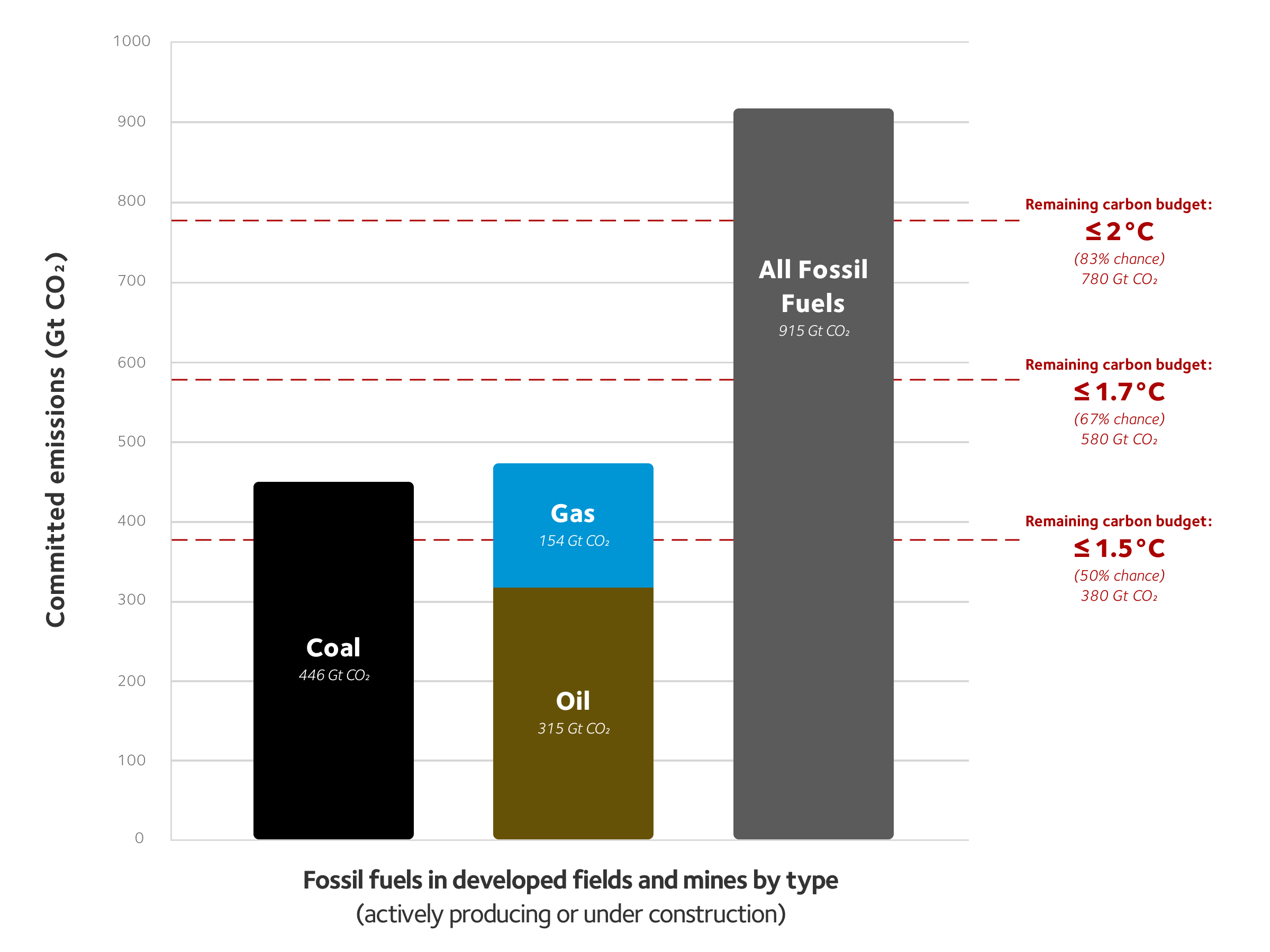New Data: Shut Down 60% of Existing Fossil Fuel Extraction to Keep 1.5°C in Reach. In May 2021, the International Energy Agency (IEA) sent shockwaves through the fossil fuel industry and its allies in government. It concluded that no new coal mines or oil and gas fields should be developed if the world is to hold global warming to 1.5 degrees Celsius. That is the limit agreed by governments to preserve a livable climate. The IEA’s logic was clear: Already-developed extraction projects contain enough oil, gas, and coal to fulfill declining levels of demand aligned with limiting warming to 1.5°C. Developing more fields and mines would come with climate and/or economic costs. These costs could be avoided by simply saying “no” to new extraction.
One year later, in May 2022, Oil Change International and a team of researchers [1] published a peer-reviewed study in the journal Environmental Research Letters (ERL) that went a step further than the IEA’s analysis (building on OCI’s path-breaking 2016 study).
New Data: Shut Down 60% of Existing Fossil Fuel Extraction to Keep 1.5°C in Reach
We found that developed extraction projects hold not only enough fossil fuels to meet 1.5°C-aligned demand but way too much. Extracting the oil, gas, and coal within already developed fields and mines would push the world well beyond 1.5°C of warming. In fact, our study concluded that nearly 40% of developed fossil fuel reserves need to stay in the ground to keep the 1.5°C limit within reach. Thus, in addition to ceasing new oil, gas, and coal development as per the IEA’s recommendation, governments must also ensure a significant portion of existing extraction sites are shut down and decommissioned prematurely.
Unfortunately, since the IEA and OCI studies were published, governments (with a few exceptions) and oil and gas companies (with zero known exceptions) have continued approving and investing in new extraction projects, and global fossil fuel emissions hit a new record high in 2022.
In this analysis, I provide an updated estimate of the steep and deep climate hole the fossil fuel industry has dug us into. Because of the lag time between research and final publication (and the difficulty of compiling quality coal mine data), the ERL study was based on estimates of committed carbon-dioxide (CO2) emissions from developed fossil fuel reserves and remaining carbon budgets aligned with global climate goals as of January 1, 2018. Here I update the oil and gas reserves and carbon budget estimates to a baseline of January 1, 2023.
Read more: priceofoil.org
Photo: priceofoil.org


Leave a Reply